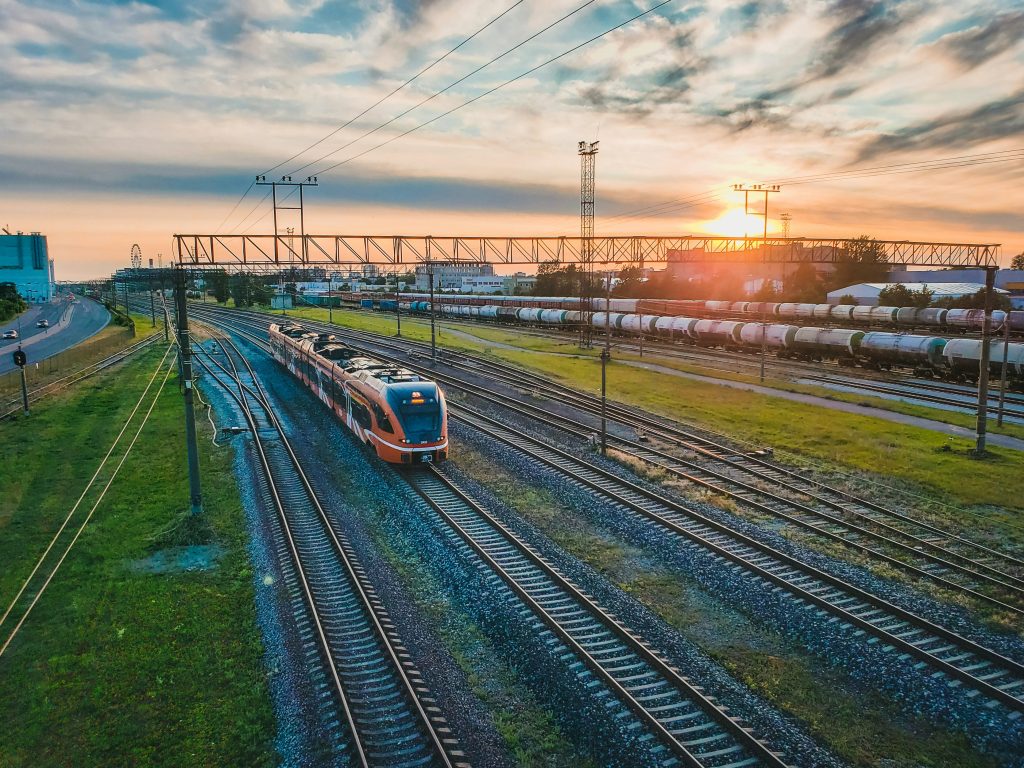It may not always be immediately obvious to drivers stuck in some of Central and Eastern Europe’s infamous bottlenecks, such as Romania’s DN1 through the Prahova Valley, or the ‘missing’ bits of motorway east of Žilina in northern Slovakia, but for much of the last 20 years the region has been on an infrastructural fast track, propelled largely by European Union funding.
From high-speed rail links to advanced digital networks and sustainable energy corridors, these initiatives are reshaping local economies and bringing CEE closer to the living standards and competitiveness levels of Western Europe.
But with every opportunity comes a fresh set of challenges, and the successful absorption of EU funds demands efficient governance, robust project management, and savvy collaboration between the public and private sectors.
Whether through the Cohesion Policy or the Recovery and Resilience Facility (RRF), tapping into EU coffers holds the key to sustained growth—if the region can overcome bureaucratic and financial obstacles.
The money is there
Cohesion Policy has long been the EU’s primary engine for driving infrastructure investment in regions that lag behind in development.
In the 2021–2027 Multiannual Financial Framework, the Union allocated about 392 billion euros for various cohesion-focused programmes. Under this broad umbrella, the European Regional Development Fund (ERDF) and the Cohesion Fund stand out for their roles in spurring economic advancement.
The ERDF emphasises research, innovation, digital expansion, SME support, and low-carbon initiatives, while the Cohesion Fund channels resources into member states whose per capita Gross National Income (GNI) falls below 90 per cent of the EU average.
These funds typically target heavy-duty infrastructure undertakings in transport and environmental protection, from road overhauls to waste-management and renewable energy projects.
The Recovery and Resilience Facility is a relative newcomer but already a central pillar of Europe’s economic rebound after Covid-19. Backed by a 723.8 billion euros war chest, the RRF offers loans and grants for projects that accelerate digital transformation, advance the green transition, and fortify social resiliency.
Countries in CEE have been particularly active in seeking RRF financing to upgrade vital infrastructure and modernize public administration. While each country drafts its own National Recovery and Resilience Plan, all must meet strict milestones and targets tied to sustainable growth and technological innovation, ensuring that EU money is spent effectively.
Operational Programmes (OPs) serve as the blueprint for how countries allocate these funds. Poland, the largest beneficiary of Cohesion Policy support, channels vast sums into road modernisation, railway upgrades, and the promotion of greener technologies—moves that dovetail with its RRF efforts to reduce carbon emissions and cultivate high-tech manufacturing.
Romania has focused on water supply overhauls, bridge reinforcements, and renewable power solutions, particularly in rural communities where energy poverty remains a pressing concern.
Bulgaria is turning its attention to digitising government services and integrating greener transport solutions into Sofia’s congested streets. Despite varying local needs, the overarching mission remains the same: use EU resources to bridge development gaps and spur balanced regional growth.
Slashing travel times
In Poland, investments of more than 10 billion euros have modernised railways under the 2014–2020 Cohesion Policy, driving track upgrades, station improvements, and high-speed connections that slash travel times and entice both business travellers and tourists.
Czechia’s Prague–Brno corridor, partly financed by EU funds, showcases a similar feat. By slicing journey durations, it has stimulated economic activity in cities along the route, including new industrial parks and logistics hubs.
Hungary, for its part, has focused on revamping key lines like the Budapest–Kelebia route toward the Serbian border to bolster cross-border commerce.
Energy projects are equally noteworthy. Romania’s BRUA gas pipeline, backed by EU money from the Connecting Europe Facility, exemplifies how regional cooperation can enhance energy security, linking Bulgaria, Romania, Hungary, and Austria in a network that lessens reliance on external supplies.
Lithuania’s push to expand wind farms with support from the ERDF has seen the share of renewables in its final energy consumption climb above 26 per cent in 2021, making the Baltic nation a top performer in the clean-energy arena.
By weaving in hydrogen-based transport and advanced battery storage, Lithuania aims to remain at the cutting edge of the energy transition.
Funding also filters into smaller-scale yet transformational ventures. Slovakia has used portions of the ERDF to retrofit schools and community centers, improving insulation and introducing solar panels in outlying areas where energy costs are a heavy burden.
In Bulgaria, EU-backed start-up incubators are fuelling a vibrant tech ecosystem in Sofia. Croatia, meanwhile, employs funds to breathe new life into war-scarred regions, fixing harbours, modernising public utilities, and elevating its tourism infrastructure along the Adriatic coast.

The dangers of red tape
However, these ambitious undertakings come with their own hazards. Bureaucratic entanglements stand out as a recurring complaint.
EU funding applications require adherence to rigorous guidelines, including environmental impact evaluations and procurement regulations that can overwhelm small municipalities with thin administrative teams.
Delays caused by red tape often trigger funding gaps and can endanger entire projects if deadlines lapse. Co-financing requirements create an additional bottleneck: cities or regional authorities must usually contribute a portion of the costs, an uphill task if local budgets are already stretched.
As a consequence, governments sometimes steer clear of large-scale ventures that might strain national finances and instead focus on more modest proposals.
To implement major infrastructure projects, recipients must also possess the technical expertise to manage everything from land expropriation to complex construction schedules.
Even when funding flows in from Brussels, local agencies can lack the project management skills to keep timelines on track, particularly in less urbanised zones. Programmes that offer technical assistance seek to address this mismatch, but the steady drain of skilled professionals to Western Europe—engineers, architects, digital specialists—remains an obstacle to building up robust local expertise.
Maximising impact
How can CEE countries maximise the impact of EU funding despite these hurdles? First, public-private partnerships (PPPs) offer a path to sharing both risks and rewards between governments and private investors.
In Poland, motorway construction projects have flourished under PPP models, demonstrating that tapping private capital can not only speed up project timelines but also lock in high construction standards. For success, this approach requires transparent legal frameworks and a stable policy environment that reduces uncertainty for investors.
A second remedy lies in the simplification of administrative processes. By centralising some of the administrative load in specialized project management offices, smaller municipalities can access advisory support on how to navigate EU regulations.
Digitisation of government procedures can further reduce paperwork, while targeted training for civil servants ensures they fully grasp the complexities of EU compliance, financial instruments, and monitoring requirements.
Third, embracing a blend of funding sources helps mitigate risks tied to reliance on a single mechanism. Besides tapping multiple EU instruments such as the ERDF, Cohesion Fund, and RRF, local authorities can secure loans or guarantees from institutions like the European Investment Bank (EIB) and the European Bank for Reconstruction and Development (EBRD). These bodies bring not only financing but also technical counsel.
Collaboration
Cross-border collaborations can also supercharge infrastructure projects. The Via Carpathia corridor, designed to connect the Baltic to the Aegean Sea, exemplifies the collective payoff that emerges when countries align their construction timelines and share best practices.
By combining resources and working under a cohesive blueprint, states can build lasting transport networks that make the entire region more attractive to investors.
Finally, while infrastructure improvement must address immediate problems like potholes or decrepit bridges, a future-oriented perspective is vital. EU priorities are leaning toward the Green Deal, digital transformation, and resilience-building efforts. By embracing hydrogen transport networks or 5G-enabled industries, CEE nations can tap new lines of EU support while boosting their long-term economic competitiveness.
For all the difficulties, the region’s progress underscores the transformative power of well-targeted EU funding. Sleek rail lines and efficient roads are cutting journey times and enhancing trade connectivity.
Renewable energy systems are lessening dependence on polluting fuel sources and sharpening energy security. Urban revitalisation is uplifting communities that had long been held back by outdated utilities or crumbling public spaces. The broader lesson is clear: EU funds can serve as a powerful lever for growth, yet their full impact will depend on the institutional capabilities and strategic vision of the nations and municipalities that receive them.
In time, if the region continues to refine its administrative efficiency, strengthen public-private synergies, and focus on future-proof projects, it could set a benchmark for how to productively channel external financing into all sectors of the economy. The work already done shows that the promise of EU funding is real, but unlocking its full potential hinges on clear-eyed policymaking, rigorous oversight, and a willingness to look beyond short-term gains to plan for the decades ahead.
By addressing these factors, Central and Eastern Europe can expect a lasting renaissance that cements its place as a vibrant, dynamic cluster of EU member states.
Top photo by Denys Rodionenko on Unsplash; Below, train in Estonia by Silver Ringvee on Unsplash.







